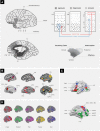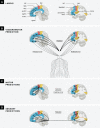The theory of constructed emotion: an active inference account of interoception and categorization
- PMID: 27798257
- PMCID: PMC5390700
- DOI: 10.1093/scan/nsw154
The theory of constructed emotion: an active inference account of interoception and categorization
Erratum in
-
The theory of constructed emotion: an active inference account of interoception and categorization.Soc Cogn Affect Neurosci. 2017 Nov 1;12(11):1833. doi: 10.1093/scan/nsx060. Soc Cogn Affect Neurosci. 2017. PMID: 28472391 Free PMC article. No abstract available.
Abstract
The science of emotion has been using folk psychology categories derived from philosophy to search for the brain basis of emotion. The last two decades of neuroscience research have brought us to the brink of a paradigm shift in understanding the workings of the brain, however, setting the stage to revolutionize our understanding of what emotions are and how they work. In this article, we begin with the structure and function of the brain, and from there deduce what the biological basis of emotions might be. The answer is a brain-based, computational account called the theory of constructed emotion.
Keywords: affect; categorization; concepts; construction; emotion; interoception; predictive coding.
© The Author (2016). Published by Oxford University Press. For Permissions, please email: journals.permissions@oup.com.
Figures






References
-
- Adolphs R., Russell J.A., Tranel D. (1999). A role for the human amygdala in recognizing emotional arousal from unpleasant stimuli. Psychological Science, 10(2),167–71.
-
- Adolphs R., Tranel D. (1999). Intact recognition of emotional prosody following amygdala damage. Neuropsychologia, 37(11),1285–92. - PubMed
-
- Adolphs R., Tranel D. (2003). Amygdala damage impairs emotion recognition from scenes only when they contain facial expressions. Neuropsychologia, 41(10),1281–9. - PubMed
MeSH terms
Grants and funding
LinkOut - more resources
Full Text Sources
Other Literature Sources
Medical

